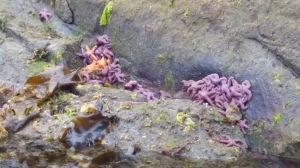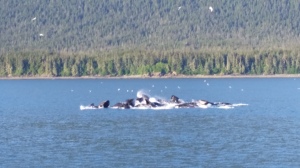Memory is a funny thing. Sometimes you’re struck by a memory that you never remembered, a truly lost experience that somehow reappears.
But other times, you remember something you know you remember, but just haven’t though about it a while. That happened to me a few days ago.
A friend posted a picture of his son on Facebook after the son took a tumble off his bike, scrapping his face. I think I actually inhaled suddenly and loudly, overwhelmed by a memory that was always there.
When I was 8 years old, in the second grade, mom and dad (ha, mom, I’m sure) let me ride my bike to the end of the street for the first time. Doesn’t sound like much, but it was. We lived on a street that was no bigger than an alley. Back then, it had never been blacktopped. Instead, every so often the city would come in and put down a layer of fresh, hot, sticky tar, followed by a truck that would pour a layer of pebbles on top, small rocks that would wear down smooth in no time at all.
It was a short street, a quarter of a mile or a little longer, with just two houses. Ours sat on three acres, which explains why there were so few homes. To the south, the street ran beside the school yard that abutted ours. To the north, or left from my house, it ran down and then up a hill through a thick stand of trees. Once you started up the far hill, the road was invisible from our porch.
I imagine myself starting the journey from in front of the massive tree at the end of our front yard, near the top of the hill. The yard flowed nearly 30 yards from the porch to the street and that tree was always a marker. I flew down the hill on my blue Schwinn, perhaps peddling madly from my banana seat or perhaps standing tall on the peddles. I cruised up the other side of the hill, turned at the stop sign. I’m sure I paused. Then, I was racing back.
The return trip did not go well.
At the bottom of the hill, the lowest point of the trough, my front wheel skidded on loose gravel. I don’t know if I pounded backwards on the brake or just tumbled off. But I flew between the handlebars and skidded down the road on my face, the right side of my face.
I don’t remember the pain, though it must have hurt. I was, it must be noted, a resilient child, one who flung her body around with abandon. I do remember jumping around and screaming at the top of my lungs “my bike, my bike, my bike.” It was much more important than my face, and I think now that I must not have had it too long.
I don’t know why I didn’t just pick it up. I’m sure I was stunned.
The rest of the day is gone; it was nearly 50 years ago. But I distinctly remember the massive scab across the top of my cheekbone, how tight it felt, and the path it followed down my face to the point of my chin. I don’t remember how long it took to heal, but I do recall that my teacher, the beloved Mrs. Cain, asked me to tell my mom to send me to school with a new face.
I can still find the small scar on my cheek that has been with me ever since.













































